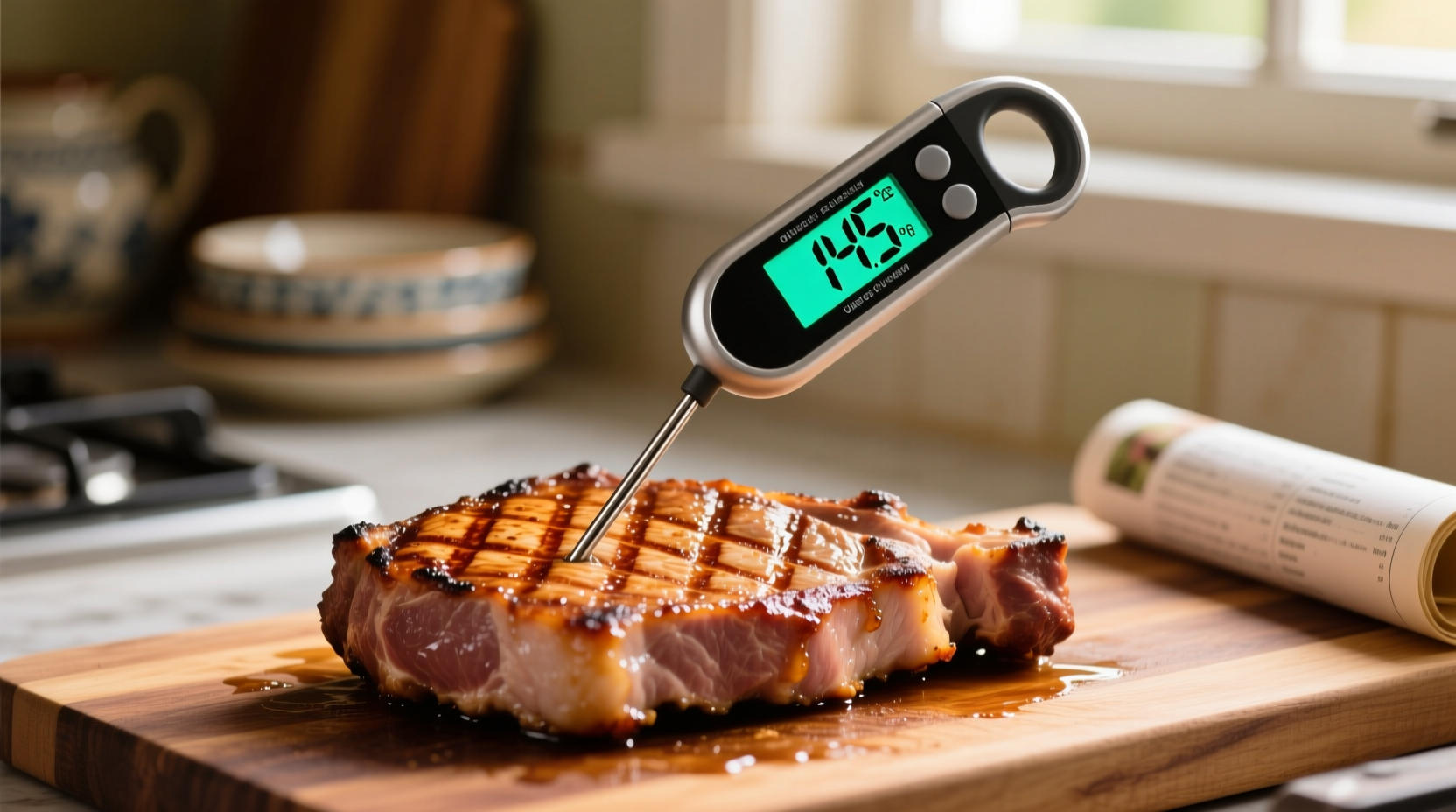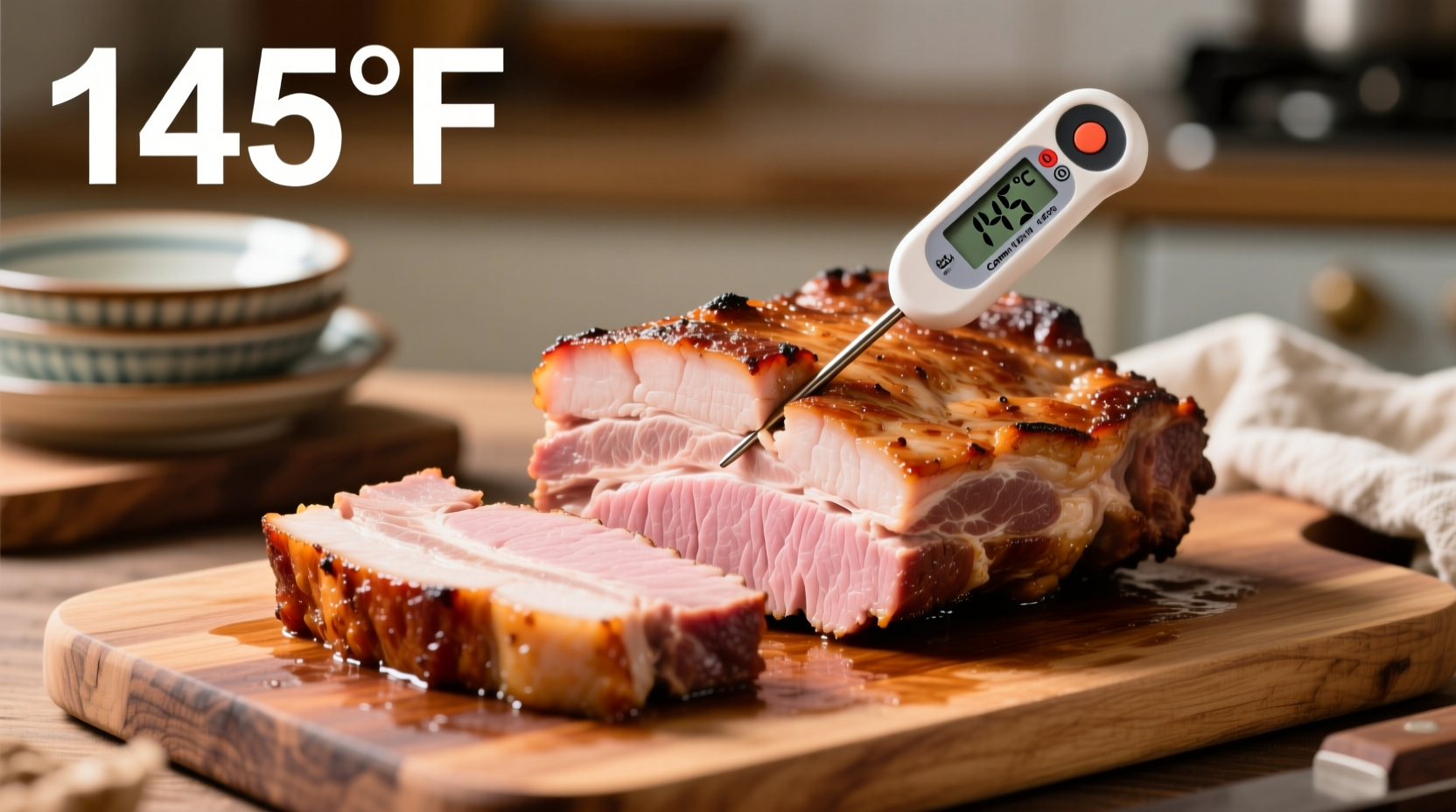The safe minimum internal cooking temperature for pork is 145°F (63°C) for whole cuts like loin, chops, and roasts, followed by a 3-minute rest period. For ground pork and organ meats like liver, cook to 160°F (71°C). These temperatures are scientifically validated to eliminate harmful bacteria while preserving optimal texture and flavor.
For decades, many home cooks followed the outdated advice to cook pork until it's completely white and well-done. But modern farming practices and food safety research have transformed our understanding of proper pork preparation. Today's pork is leaner and safer than ever before, and cooking it to the correct temperature ensures both safety and exceptional eating quality.
Why 145°F Is the Perfect Temperature for Pork
Understanding the science behind pork cooking temperatures eliminates guesswork and prevents overcooking. The USDA's Food Safety and Inspection Service (FSIS) updated their recommendation in 2011 based on extensive research showing that 145°F with a 3-minute rest time effectively destroys Trichinella spiralis and other pathogens while maintaining juiciness.
| Pork Cut Type | Recommended Temperature | Rest Period | Visual Indicators |
|---|---|---|---|
| Whole cuts (loin, chops, roasts) | 145°F (63°C) | 3 minutes | Slightly pink center, clear juices |
| Ground pork | 160°F (71°C) | None required | No pink color remaining |
| Pork shoulder (pulled pork) | 195-205°F (90-96°C) | 20+ minutes | Falls apart easily |
| Ham (pre-cooked) | 140°F (60°C) | None required | Heated through |
How Pork Cooking Temperatures Have Evolved
The shift from "cook until well-done" to precise temperature guidelines represents significant progress in food safety science. In the 1980s, pork was routinely cooked to 160-170°F due to concerns about trichinosis. However, improved farming practices virtually eliminated this parasite from commercial pork. The USDA's 2011 update reflected this reality, lowering the recommended temperature to 145°F with a rest period.
This change wasn't arbitrary—it came after years of research by food scientists who determined that maintaining 145°F for just 3 minutes provides equivalent pathogen reduction as higher temperatures with no rest period. The rest period allows residual heat to continue killing bacteria while letting muscle fibers relax, resulting in juicier meat.
Measuring Temperature Correctly: The Critical Step Many Cooks Miss
Knowing the right temperature is useless if you don't measure it properly. Many home cooks make these common thermometer mistakes:
- Using the wrong thermometer type—instant-read digital thermometers provide the most accurate readings for pork
- Measuring in the wrong spot—insert the probe into the thickest part, away from bone or fat
- Not checking multiple spots—especially in larger roasts, temperature can vary significantly
- Not allowing for carryover cooking—remove pork from heat 5°F below target temperature
For best results, calibrate your thermometer regularly using the ice water method (32°F/0°C) or boiling water method (212°F/100°C at sea level). The USDA provides detailed thermometer calibration instructions through their Food Safety Education resources.

Special Considerations for Different Pork Cuts
Not all pork cuts follow the same temperature rules. Understanding these distinctions prevents disappointing results:
Whole Muscle Cuts (Chops, Loin, Tenderloin)
These benefit most from the 145°F standard. Cooking beyond this temperature causes rapid moisture loss in these lean cuts. The slight pink color at 145°F is perfectly safe and indicates optimal doneness.
Ground Pork and Sausage
Because grinding distributes potential surface bacteria throughout the meat, these require the higher 160°F temperature. This applies to both homemade and store-bought ground pork products.
Collagen-Rich Cuts (Shoulder, Belly, Ribs)
For pulled pork or ribs, temperature targets shift dramatically higher. These cuts require 195-205°F to properly break down connective tissues. The USDA's FoodKeeper app provides specific guidance for these specialty preparations.
Avoiding Common Pork Cooking Mistakes
Even when following temperature guidelines, many home cooks encounter these issues:
- Pulling meat too early—remove pork from heat 5°F below target temperature to account for carryover cooking
- Skipping the rest period—the 3-minute rest allows juices to redistribute; cutting immediately causes moisture loss
- Relying on color alone—pork can remain slightly pink even when properly cooked, or appear white while still undercooked
- Using visual cues instead of a thermometer—texture and juice color are unreliable indicators of safety
Food Safety Beyond Temperature
Temperature is just one component of safe pork preparation. Remember these additional food safety practices:
- Store raw pork below 40°F and use within 3-5 days of purchase
- Prevent cross-contamination by using separate cutting boards for raw meat
- Wash hands thoroughly after handling raw pork
- Never partially cook pork and finish later—this creates a dangerous temperature zone where bacteria multiply rapidly
The Centers for Disease Control and Prevention (CDC) reports that proper cooking temperature is the most effective home food safety practice for preventing foodborne illness from meat products. Following these guidelines reduces your risk while maximizing flavor and texture.











 浙公网安备
33010002000092号
浙公网安备
33010002000092号 浙B2-20120091-4
浙B2-20120091-4